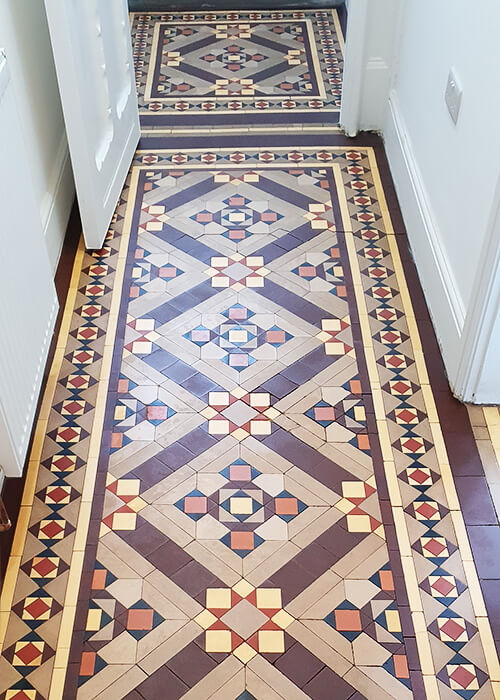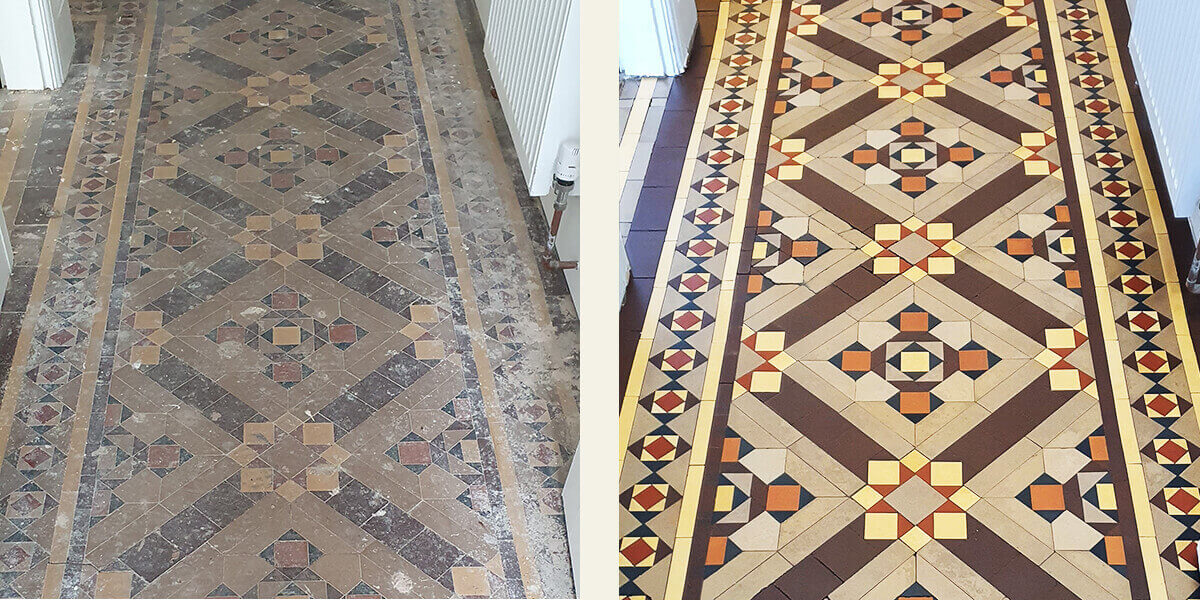Victorian tile cleaning in Durham.
These original Victorian tiles in Durham had been covered in old carpet, and when the new owners decided to replace the carpet they discovered these beautiful Victorian tiles.
However, over time these particular tiles became dirty and damaged. This home was built in 1865 and the customer wanted desperately to restore and preserve these tiles. The Victorian Tile Restorer used a safe solution to gently remove years of deep seated dirt, paints, plaster, bees wax that had accumulated.
After the drying time, he carefully applied one coat of high quality victorian tile enhancing sealer that would both restore the original colour of the tile, and keep it looking great for years. This also makes for easier regular cleaning because the floor is now protected with a high quality professional grade sealer.

Fully Restored
Have your floor fully restored by a master craftsman with a 50 year repair guarantee against tile movement and a 10 year guarantee against fading, water, grease and oil staining.
Deep Cleaning
Polishing
Restoration
Pattern Matching
Tile Sourcing
Substrate Replacement
Tile Replacement
Colour Enhancing
Tile Sealing
Get in touch with Tony for a friendly chat using the contact form, and he will discuss your requirements and arrange a free site survey and Estimate.
History of Victorian Tiles
The first tiles of this type were used in public buildings, most notably the Victoria and Albert Museum, and churches from the 1860s. When their popularity grew, they were used frequently in Victorian homes, where the hallway floors of terraced houses would usually have them. They have a beautiful appearance that is also hard-wearing - which has enabled many of them to survive until today.
Changes in fashion during 1960-1980 meant that tiled floors went unused and were often covered with new flooring, like linoleum carpeting. The tiles have stayed intact, but old repairs from major remodels like cement screed to level a new floor or adhesive used to install carpets are starting to come loose and cause cracks and in some cases, full tile detachment. Other signs of damage include nails piercing the surface of a tile, which makes it prone to cracking under pressure. And don't forget plumbing and electrical work - plumbing changes can lift a tile up, while electrical changes can create heat that causes the tiles to pop off.
The type of substrate used will determine how your floor looks and stands up to wear. Traditional substrates are made with lime mortar, on suspended timber floors, or from rubble and lime in varying quantities. Substrates can also fail, though, in some cases cracking tiles or sinking.



